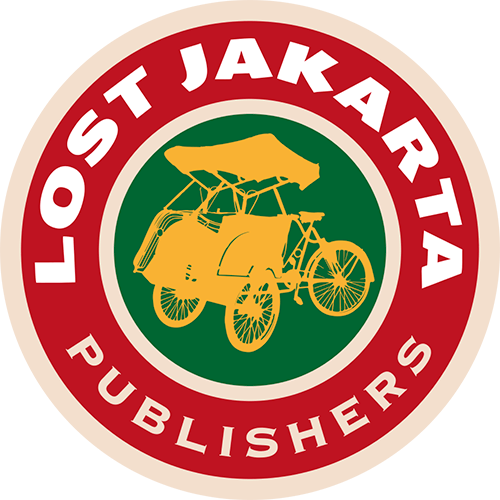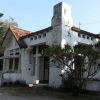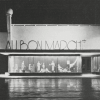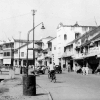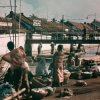
Water spraying at the northern end of what was called Boulevard Gondangdia 100 years ago. We recognise the majestic premises of the building company N.V. De Bouwploeg (now the Cut Meutia mosque) which was in transition at the time. In 1920 the Batavia City Council took over all possessions of De Bouwploeg and the company went into liquidation. Although we see the name of N.V. De Bouwploeg still present on all sides of the dome, the other sign halfway the side building says “Traktie en Materieel Staatsspoorwegen” (Traction and Materials State Railways) which occupied part of the building.
Road spraying
The roads in Batavia/Jakarta would only be asphalted as from 1922 hence the unsealed road had to be sprayed regularly during the dry season to avoid it becoming dusty and loose. This was in the 19th and early 20th centuries still a manual job conducted by men with two watering cans but by 1920 specific motorised vehicles were used to carry out this job.
Road name changes
The road name would change into Van Heutszboulevard in 1924, the year that the former Governor-General of the Dutch East Indies (1904-1909) passed away. In July 1950 it was changed into its current name Jalan Teuku Umar. In front of the Bouwploeg building we see the boom gates of the train line between the stations Gondangdia and Tjikini/Cikini. If standing on the same spot today one would not see that many changes, apart from the fact that the train line was elevated in 1992 to avoid traffic congestion and now runs 10 metres above ground level and partly blocks the view of the former Bouwploeg office. If the photographer would turn around he would see the Kunstkring building which was opened in 1914 and still exists today too.
source: Leiden University, the Netherlands
